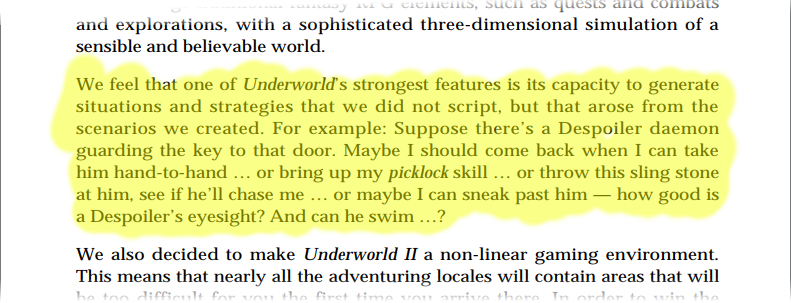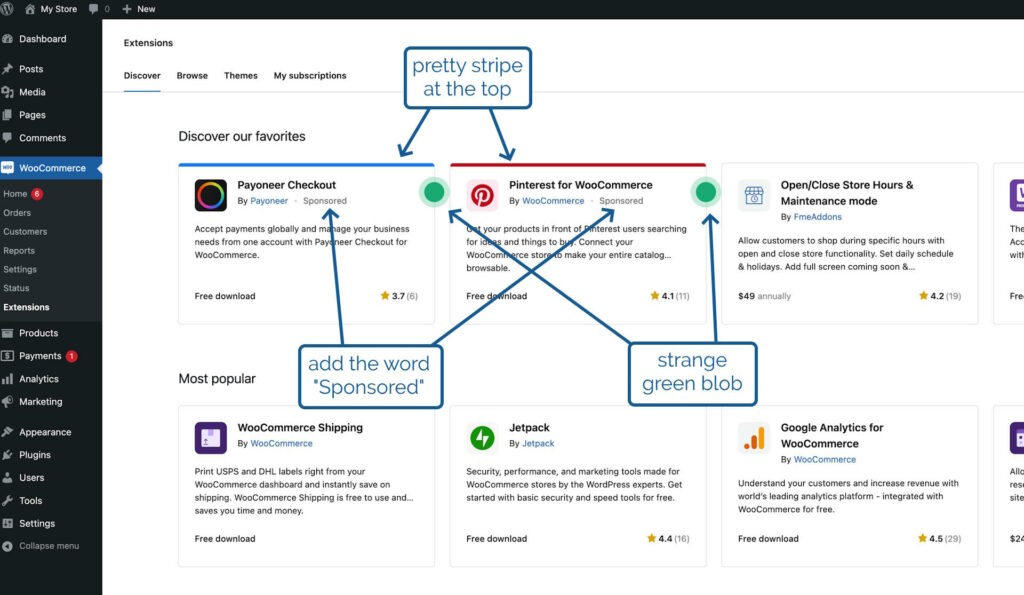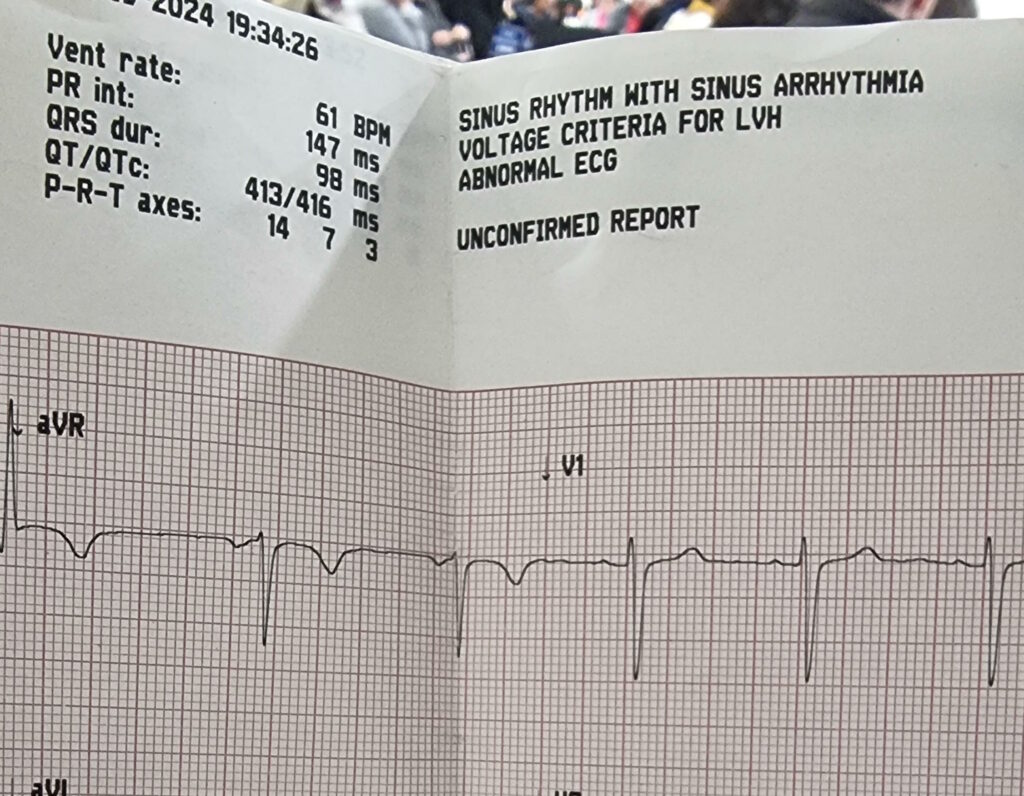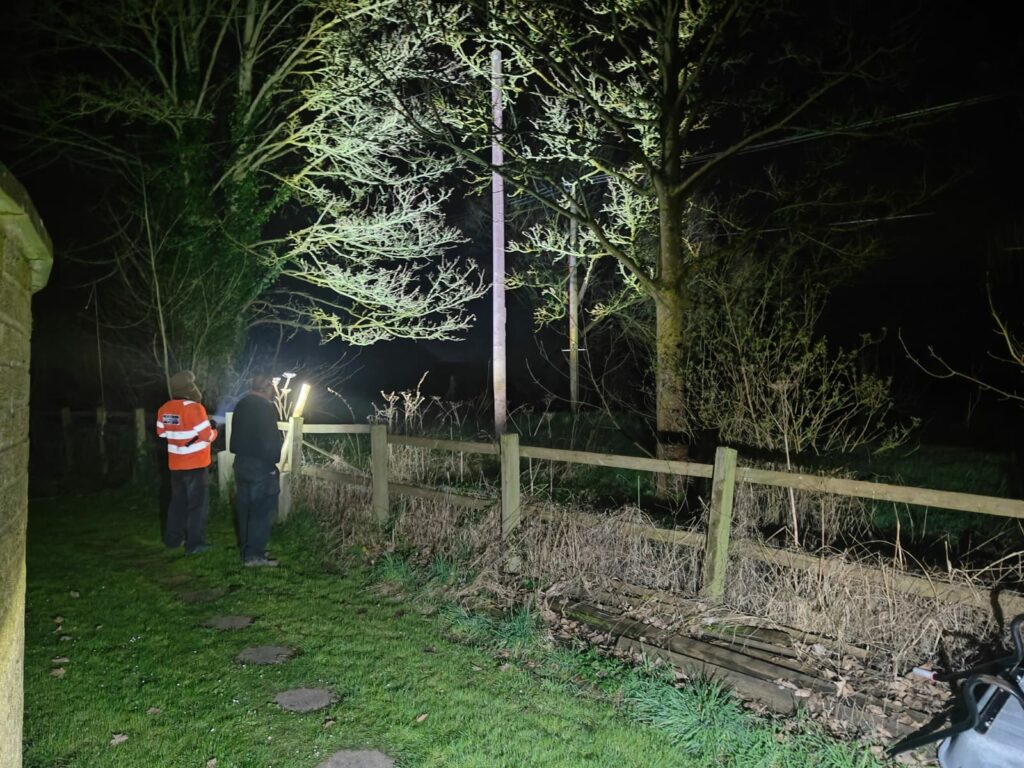What they say: “This site works better in our app.”
What they mean (optimistic): “We couldn’t be bothered to make a good website.”
What they mean (realistic): “We can track and monetise you better if we can coerce you into installing this.”
What they say: “This site works better in our app.”
What they mean (optimistic): “We couldn’t be bothered to make a good website.”
What they mean (realistic): “We can track and monetise you better if we can coerce you into installing this.”
I was contacted this week by a geocacher called Dominik who, like me, loves geocaching…. but hates it when the coordinates for a cache are hidden behind a virtual jigsaw puzzle.
A popular online jigsaw tool used by lazy geocache owners is Jigidi: I’ve come up with several techniques for bypassing their puzzles or at least making them easier.
Dominik had been looking at a geocache hidden last week in Eastern France and had discovered that it used JigsawExplorer, not Jigidi, to conceal the coordinates. Let’s take a look…

I experimented with a few ways to work-around the jigsaw, e.g. dramatically increasing the “snap range” so dragging a piece any distance would result in it jumping to a neighbour, and extracting original image URLs from localStorage. All were good, but none were perfect.
Then I realised that – unlike Jigidi, where there can be a congratulatory “completion message” (with e.g. geocache coordinates in) – in JigsawExplorer the prize is seeing the completed jigsaw.

Let’s work on attacking that bit of functionality. After all: if we can bypass the “added challenge” we’ll be able to see the finished jigsaw and, therefore, the geocache coordinates. Like this:
jigex-prog.js file. Right-click and select Override Content (or Add Script Override).
e&&e.customMystery?tt.msgbox("This puzzle's box top preview is disabled for added challenge."): –
this code checks if the puzzle has the “custom mystery” setting switched on and if so shows the message, otherwise (after the :) shows the box cover.
The moral, as always, might be: don’t put functionality into the client-side JavaScript if you don’t want the user to be able to bypass it.
Or maybe the moral is: if you’re going to make a puzzle geocache, put some work in and do something clever, original, and ideally with fieldwork rather than yet another low-effort “upload a picture and choose the highest number of jigsaw pieces to cut it into from the dropdown”.
Ever wondered why Oxford’s area code is 01865? The story is more-complicated than you’d think.

I’ll share the story on my blog, of course. But before then, I’ll be telling it from the stage of the Jericho Tavern at 21:15 on Wednesday 17 April as my third(?) appearance at Oxford Geek Nights! So if you’re interested in learning about some of the quirks of UK telephone numbering history, I can guarantee that this party’s the only one to be at that Wednesday night!
Not your jam? That’s okay: there’s plenty of more-talented people than I who’ll be speaking, about subjects as diverse as quantum computing with QATboxen, bringing your D&D experience to stakeholder management (!), video games without screens, learnings from the Horizon scandal, and whatever Freyja Domville means by The Unreasonable Effectiveness of the Scientific Method (but I’m seriously excited by that title).
Anyway: I hope you’ll be coming along to Oxford Geek Nights 57 next month, if not to hear me witter on about the fossils in our telecommunications networks then to enjoy a beer and hear from the amazing speakers I’ll be sharing the stage with. The event’s always a blast, and I’m looking forward to seeing you there!
There are two junctions at which I can join the A40 trunk road from my house. When I drive East, I use the Easternmost of the two; when I drive West, I use the Westernmost; but I almost never drive the stretch of road between them!
A few years ago I generated heatmaps of my movements based on my long-running personal location log and, indeed, it shows a “cool spot” along this section of road too:
It’s inevitable I suppose that there should exist a “road (segment) less-travelled” right on my doorstep, but it still feels strange. Like when you live near a tourist attraction that you never get around to visiting. Except instead of a tourist attraction, I live near a major highway I rarely use.
Maybe I’m missing out on something great. Probably the commuters who use that road to get into and out of Oxford don’t think so.
This checkin to GC2BHX9 C-130J Hercules reflects a geocaching.com log entry. See more of Dan's cache logs.
Found by the geohound and I after a brief battle with the first stinging nettles of the season. Owie! She and I came over from Stanton Harcourt this morning – from which we see plenty of Brize Nortons’ Hercules! – because many of our favourite local walks are waterlogged. Things are somewhat drier underfoot here, but after our walk through the fields the pup and I are still rather muddy! TFTC.
This checkin to GC6Q3A1 Cur.Bri.Lew 11 reflects a geocaching.com log entry. See more of Dan's cache logs.
The pup and I unearthed a few likely hiding places without success here. Not sure what we’ve missed: feels like we lifted every hint item in the vicinity!
This checkin to GC6Q39R Cur.Bri.Lew 10 reflects a geocaching.com log entry. See more of Dan's cache logs.
QEF for the geopup and I on this strangely springlike morning. Cache container is damaged almost beyond recognition, as others have observed, and is desperately in need of replacement. TFTC.
In August, I celebrated my blog – with its homepage weighing-in at a total of just 481kb – being admitted to Kev Quirk‘s 512kb club. 512kb club celebrates websites (often personal sites) whose homepage are neither “ultra minimal” or “link pages” but have a total size, including all assets, of under half a megabyte. It’s about making a commitment to a leaner, more-efficient Web.
My relatively-heavyweight homepage only just slipped in under the line. But, feeling inspired perhaps by some performance enhancements I’ve been planning this week at work, I decided to try to shave a little more off:
Here’s what I changed:

loading="lazy".
.ico format (<link rel="shortcut icon" href="https://bcdn.danq.me/_q23t/icons/favicon-16-32-48-64-128.ico" />),
which is pretty redundant nowadays because all modern browsers (and even IE11)
support .png icons. I was already providing .png and .svg versions, but it turns out that some browsers favour the one with the
(harmful?) rel="shortcut icon" over rel="icon" if both are present, and .ico
files are – being based on Windows Bitmaps – horrendously inefficient.
By getting under the 250kb threshold, I’ve jumped up a league from Blue Team to Orange Team, so that’s nice too. I can’t see a meaningful path from where I’m at to Green Team (under 100kb) though, so this level might have to suffice.
This post is also available as an article. So if you'd rather read a conventional blog post of this content, you can!
This vlog is also available as a blog post if you’d rather read what I have to say than watch/listen to me!
Also available on:
This post is also available as a video. If you'd prefer to watch/listen to me talk about this topic, give it a look.
Spoiler: it’s Alorik’s crystal ball in Ultima Underworld II.
This blog post is also available as a vlog: why not watch & listen to me as I demonstrate my favourite video game Easter egg!
My favourite video game Easter egg is found in Ultima Underworld II: Labyrinth of Worlds1.
Released early in 1993 after missing a target of Christmas 19922, it undersold despite being almost universally well-received by reviewers3.

Developed by Looking Glass Technologies, it used an enhanced version of the engine they’d used for the game’s prequel a year earlier4.
The engine is particularly cool for it’s time; it’s sometimes compared to Wolfenstein5, but that’s not entirely fair… on Wolfenstein! The original version of Underworld‘s 3D engine predated Wolfenstein… and yet supported several features that Wolfenstein lacked, like the ability for the player to look up and down and jump over chasms, for example.

The team’s expertise and code would eventually be used to produce System Shock in 1994. The team’s producer, Warren Spector, would eventually draw from his experience of the Ultima Underworld games when he went on to make Thief: The Dark Project and Deus Ex.
But the technology of Ultima Underworld II and its prequel aren’t as interesting as its approach to storytelling and gameplay. They’re:
This was a highly innovative combination6.

What’s being described there is what we’d now call emergent gameplay, and while it wasn’t completely new in 19937 it was still uncommon enough to be noteworthy.
The Ultima series are riddled with Easter eggs, but my favourite is one that I feel is well-hidden, beautiful… and heavily laden with both fan service and foreshadowing!

To find the Easter egg, you must first travel to Anodunos. This city was once the capital of a tropical city-state which had become allied to the Guardian, the the principal antagonist of Ultima VII through IX.

After the city’s major, Beatrice, attempted to put an end to the red titan’s growing demands, the Guardian cursed the city fountain to radiate out a magical cold that eventually froze the entire settlement under a cave of ice.

On the Eastern bank of the city’s river we find the remnants of the workshop of the magician Alorik, and in it – if we look in the right place8 – a secret door. We can’t open it though: unusually for a secret door in this game, it’s locked.

I didn’t even find this chamber on my first playthrough of the game. It was only on my second, while using the Map Area spell to help me to draw accurate maps of the entire game world, that I found the room… and even then I spent some time hunting for a switch on the “outside” before eventually giving up and teleporting into the secret room.

There’s valuable treasure here including a sceptre of mana restoration, a “grav” runestone (probably still easier to get than the one at the Scintillus Academy), but what’s most interesting is the crystal ball, which the player can look into to see a vision of another place and, in the case of this orb, another time.
The first time you look into it, you’re told:
You see yourself striving against the forces of Mondain and Minax in the lands of ancient Sosaria.9
Mondain and Minax are the antagonists in Ultima I and Ultima II. We’re seeing the earliest parts of the player character’s adventures.

If we look into the crystal ball a second time:
You see yourself climbing to the peak of Olympus Mons on the planet Mars.
This is a reference to the plot of Ultima: Worlds of Adventure 2: Martian Dreams… which is a… weird choice of game to reference.
In my mind, a more logical leap forward in time might have been to jump to Ultima IV10, in which the protagonist first becomes the Avatar of the Eight Virtues and the Hero of Britannia. Martian Dreams is… a sequel to a spinoff of Ultima VI. So why pick that?

Martian Dreams starts with a friend of the Avatar’s from Earth facilitating the Avatar and their companions to set out on an adventure to the planet Mars. That friend is called Dr. Spector, obviously named for Warren Spector, who helped develop Ultima VI and, of course, this game. This usual choice of vision of the past is a cryptic nod to the producer of Underworld II.
Let’s look again:
You see yourself in the Deep Forest, speaking with the peace-loving simian race of Emps.
This one’s a reference to Ultima VII, the game whose story immediately precedes this one. The Deep Forest seems an strange part of the adventure to choose, though. The Avatar goes to the Deep Forest where, via some emps and then a wisp are eventually lead to the Time Lord11. The Time Lord provides a whole heap of exposition and clues that the Avatar needs to eventually close the Black Gate and win the game.

Do these references serve to hint that this crystal ball, too, is a source of exposition and guidance? Let’s see what it says next.
You see yourself peering into a crystal ball.
I remember the moment I first saw this happen in the game: serious chills! You’ve just found a long-lost, centuries-buried secret chamber, in which there’s a crystal ball. You peer into it and observe a series of moments from throughout your life. You continue to watch, and eventually you see yourself, staring into the crystal ball: you’re seeing the present. So what’s next?

If you look again, you’re asking to see… the unwritten future:
You see yourself winding a great war horn in the throne room of Castle British.
To save Britannia in Ultima Underworld II, the Avatar needs to exploit symmetries implicit in The Guardian’s spellcasting to travel to eight different parallel worlds, find a place from which His power stems, dispel it, encase themselves in a shell of basilisk oil-infused magic mud, immerse themselves in lava to bake it on, find a magic sigil, consume a djinn… it’s a whole thing. But ultimately it all leads to a climactic end scene in which the Avatar raises a horn retrieved from the Tomb of Praecor Loth and blows it to shatter a dome of blackrock.

If you happen to find this clue on your first playthrough, it’s helpful exposition.
But that’s the end of this game, right? How can we possibly peer into the orb again?
You see yourself sailing through majestic pillars cropping up out of the sea, on a voyage of discovery.
What’s being described there is the opening scene from the next game in the series, the as-yet-unreleased Ultima VII Part 2: Serpent Isle!

This vision is a teaser of what’s to come. That’s just… magical, for both the character and the player.
The character uses fortune-telling magic to see their future, but the player is also seeing their future: if they’re playing Ultima Underworld II at or close to its release date, or they’re playing through the games in chronological order, they’re in a literal sense being shown what comes next in their life. That’s really cool.12
Let’s look again:
You see the obscure form of an old and dear friend, as he sacrifices his life for the good of all.
Some time after the party arrives on Serpent Isle, the Avatar’s companions are possessed by the Banes of Chaos and go on a murderous rampage. Later, there’s a ritual that will save the world, but at the cost of the death of one of the heroes. The Avatar is willing to make the ultimate sacrifice, but in the end Sir Dupre takes his place, unwilling to live within himself after seeing the carnage he has wrought.

At the end of Serpent Isle, the Avatar is plucked out of space and time and deposited into Pagan, The Guardian’s home base. The plot of Ultima VIII and Ultima IX revolve around the Avatar working to return to a radically-changed Britannia, attempting to fight The Guardian and bring to an end the Age of Armageddon, and ultimately merging and become one with Him before vanishing completely from the world.

Which is why it’s perhaps quite fitting that if the Avatar in Underworld II looks into the orb one final time, they’re told…
You see nothing.
That’s it. That’s the end.
The end of the vision, certainly, but also: a vision of the end.
Depending on how you count the Ultima games13, this is the 13th of 17 in the series. We’re approaching the final chapter, and this Easter egg foreshadows that finale.
I feel hugely privileged that I got to experience it “organically”, by accident, as its authors presumably intended, back in 1993. But it also makes me happy to be able to share the story of it with you14.
If you haven’t seen it yet, you might enjoy watching the vlog version of this post, through which my enthusiasm for the topic might be more-palpable.
1 I’ve doubtless mentioned Ultima Underworld II before: for example both it and Ultima VII, as well as NetHack (mentioned elsewhere in this post) made it into my 2007 list of top 10 computer games that stole my life.
2 The release was delayed owing to testing revealing just too-many bugs, the penultimate of which was squashed on 18 December leaving just one more that the team couldn’t reproduce until the New Year
3 It suffered perhaps for the time of year it was released, but perhaps also for the fact that 1993 was a big year for video games and it was competing with The 7th Guest, Star Wars: Rebel Assault, Return to Zork , Myst, Disney’s Aladdin and, of course – later in the year – Doom.
4 Director/designer Paul Neurath apparently sang the praises of his team for improving texture mapping and viewport size constraints, and he’s right: they’re a huge improvement on Underworld I‘s. Neurath would later go on create the crowdfunded “spiritual successor” Underworld Ascendant, which was critically panned, which just goes to show that sometimes it’s better to get a tight team together and make it “until it’s done” than to put your half-baked idea on Kickstarter and hope you can work it out what you’re making before the money runs out.
5 Like Wolfenstein, the engine uses a mixture of software-rendered 3D (for walls and furniture) overlaid with traditionally-produced sprites (for characters and items).
6 All executed over a year before the release of the very first Elder Scrolls game. Just sayin’.
7 That king of emergent gameplay NetHack was showcasing emergent gameplay in a fantasy roleplaying game way back in the 1980s!
8 An interesting quirk of the game was that if you turned the graphics settings down to their lowest, secret doors would become just as visible as regular doors. If you’re sure there is one but you can’t quite find it, tweaking your graphics settings is much easier than casting a spell!
9 Do you like the “in the style of Underworld II” scrolls I’ve used in this post? I’ve made available the source code you need if you want to use them yourself.
10 Ultima IV is my personal favourite Ultima game, but I see the argument of people who claim that Ultima VII is the best of the series.
11 The Time Lord turns up throughout the game series. Way back in Ultima III, he appears in the Dungeon of Time where he provides a clue essential to defeating Exodus, and he appears or is referenced in most games from Ultima VII onwards. He doesn’t seem to appear in Ultima IV through Ultima VI, except… in Ultima IX, which wouldn’t be released until six years after Underworld II, it’s revealed that the Time Lord is the true identity of the seer Hawkwind… who provided the same kind of exposition and guidance in Ultima IV!
12 How did the Underworld II team know with such certainty what was being planned for Serpent Isle? At some point in 1992 project director Jeff George left Origin Studios and was replaced by lead designer Bill Armintrout, and the role of producer was assigned to… Warren Spector again! For some time, Spector was involved with both projects, providing an easy conduit for inter-team leaks.
13 How you count Ultima games and what specifically should be counted is a source of controversy in fan circles.
14 I’m sure many people reading this will have heard me talk about this particular Easter egg in-person before, over the last couple of decades. Some of you might even have heard me threaten to write a blog post about it, someday. Well: now I have. Tada! It only took me thirty years after experiencing it to write about it here, which is still faster than some things I’ve blogged about!
Yesterday, I wrote the stupidest bit of CSS of my entire career.

Owners of online shops powered by WooCommerce can optionally “connect” their stores back to Woo.com. This enables them to manage their subscriptions to any extensions they use to enhance their store1. They can also browse a marketplace of additional extensions they might like to consider, which is somewhat-tailored to them based on e.g. their geographical location2
In the future, we’ll be adding sponsored products to the marketplace listing, but we want to be transparent about it so yesterday I was working on some code that would determine from the appropriate API whether an extension was sponsored and then style it differently to make this clear. I took a look at the proposal from the designer attached to the project, which called for
That third thing seemed like an odd choice, but I figured that probably I just didn’t have the design or marketing expertise to understand it, and I diligently wrote some appropriate code.3
After some minor tweaks, my change was approved. The designer even swung by and gave it a thumbs-up. All I needed to do was wait for the automated end-to-end tests to complete, and I’d be able to add it to WooCommerce ready to be included in the next-but-one release. Nice.
In the meantime, I got started on my next bit of work. This one also included some design work by the same designer, and wouldn’t you know it… this one also had a little green blob on it?

Then it hit me. The blobs weren’t part of the design at all, but the designer’s way of saying “look at this bit, it’s important!”. Whoops!
So I got to rush over to my (already-approved, somehow!) changeset and rip out the offending CSS: the stupidest bit of CSS of my entire career. Not bad code per se, but reasonable code resulting from a damn-stupid misinterpretation of a designer’s wishes. Brilliant.
1 WooCommerce extensions serve loads of different purposes, like handling bookings and reservations and integrating with parcel tracking services.
2 There’s no point us suggesting an extension that helps you calculate Royal Mail shipping rates if you’re not shipping from the UK, for example!
3 A fun side-effect of working on open-source software is that my silly mistake gets immortalised somewhere where you can go and see it any time you like!
Having lost the (stupid, proprietary) charging cable for my smartwatch, and not been able to find it for several days, I’ve undertaken the magical ritual that’s most-certain to make it reappear: ordering a replacement one.
Do you think the 80s/90s advertisement campaign for Sarson’s vinegar – “Don’t say vinegar, say Sarson’s” – ever worked?
Like: have you ever heard anybody ask you to “pass the Sarson’s”?
This week, I received a ~240V AC electric shock. I can’t recommend it.

We’re currently having our attic converted, so we’ve had some electricians in doing the necessary electrical wiring. Shortly after they first arrived they discovered that our existing electrics were pretty catastrophic, and needed to make a few changes including a new fusebox and disconnecting the hilariously-unsafe distribution board in the garage.

After connecting everything new up they began switching everything back on and testing the circuits… and we were surprised to hear arcing sounds and see all the lights flickering.
The electricians switched everything off and started switching breakers back on one at a time to try to identify the source of the fault, reasonably assuming that something was shorting somewhere, but no matter what combination of switches were enabled there always seemed to be some kind of problem.

Noticing that the oven’s clock wasn’t just blinking 00:00 (as it would after a power cut) but repeatedly resetting itself to 00:00, I pointed this out to the electricians as an indicator that the problem was occurring on their current permutation of switches, which was strange because it was completely different to the permutation that had originally exhibited flickering lights.
I reached over to point at the oven, and the tip of my finger touched the metal of its case…
Blam! I felt a jolt through my hand and up my arm and uncontrollably leapt backwards across the room, convulsing as I fell to the floor. I gestured to the cooker and shouted something about it being live, and the electricians switched off its circuit and came running with those clever EM-field sensor pens they use.
Somehow the case of the cooker was energised despite being isolated at the fusebox? How could that be?

I missed the next bits of the diagnosis of our electrical system because I was busy getting my own diagnosis: it turns out that if you get a mains electric shock – even if you’re conscious and mobile – the NHS really want you to go to A&E.
At my suggestion, Ruth delivered me to the Minor Injuries unit at our nearest hospital (I figured that what I had wasn’t that serious, and the local hospital generally has shorter wait times!)… who took one look at me and told me that I ought to be at the emergency department of the bigger hospital over the way.

Off at the “right” hospital I got another round of ECG tests, some blood tests (which can apparently be used to diagnose muscular damage: who knew?), and all the regular observations of pulse and blood pressure and whatnot that you might expect.
And then, because let’s face it I was probably in better condition than most folks being dropped off at A&E, I was left to chill in a short stay ward while the doctors waited for test results to come through.

Meanwhile, back at home our electricians had called-in SSEN, who look after the grid in our area. It turns out that the problem wasn’t directly related to our electrical work at all but had occurred one or two pylons “upstream” from our house. A fault on the network had, from the sounds of things, resulted in “live” being sent down not only the live wire but up the earth wire too.
That’s why appliances in the house were energised even with their circuit breakers switched-off: they were connected to an earth that was doing pretty-much the opposite of what an earth should: discharging into the house!

It seems an inconceivable coincidence to me that a network fault might happen to occur during the downtime during which we happened to have electricians working, so I find myself wondering if perhaps the network fault had occurred some time ago but only become apparent/dangerous as a result of changes to our household configuration.
I’m no expert, but I sketched a diagram showing how such a thing might happen (click to embiggen). I’ll stress that I don’t know for certain what went wrong: I’m just basing this on what I’ve been told my SSEN plus a little speculation:
By the time I was home from the hospital the following day, our driveway was overflowing with the vehicles of grid engineers to the point of partially blocking the main street outside (which at least helped ensure that people obeyed our new 20mph limit for a change).

Two and a half days later, I’m back at work and mostly recovered. I’ve still got some discomfort in my left hand, especially if I try to grip anything tightly, but I’m definitely moving in the right direction.
It’s actually more-annoying how much my chest itches from having various patches of hair shaved-off to make it possible to hook up ECG electrodes!

Anyway, the short of it is that I recommend against getting zapped by the grid. If it had given me superpowers it might have been a different story, but I guess it just gave me sore muscles and a house with a dozen non-working sockets.